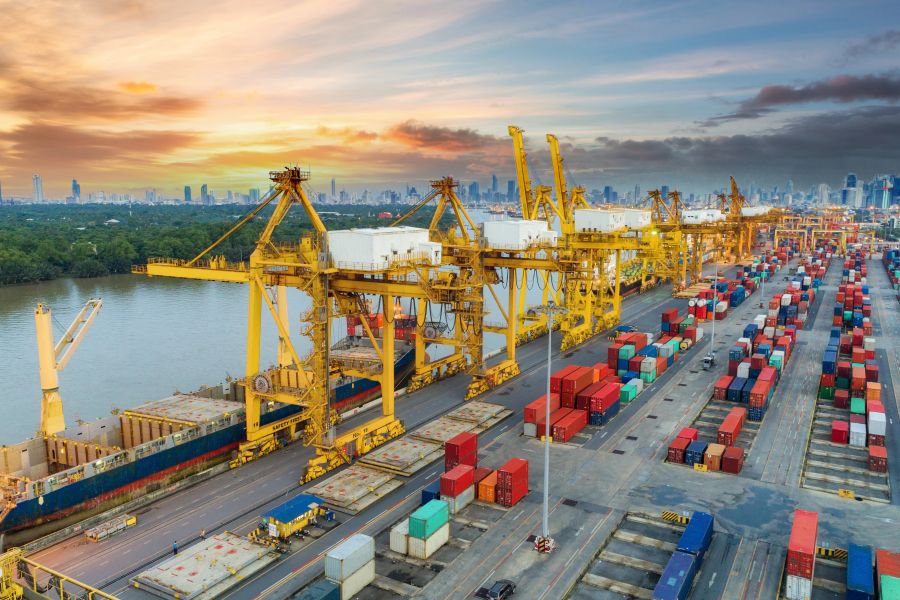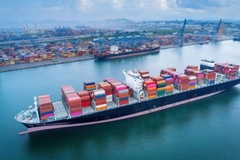US agricultural tariff rollback opens window for global F&B exporters
Key takeaways
- US rollback of 237 agricultural tariffs reopens disrupted supply chains and expands access for global exporters.
- India aims to capitalize on premium, value-added segments but must overcome cold-chain and logistics constraints.
- Latin America, Africa, and Asia accelerate shipments as competition intensifies for newly accessible US market share.
The US government’s decision to exempt more than 200 agricultural products from reciprocal tariffs has created unexpected opportunities for F&B exporters worldwide, with India positioning itself to capture an additional US$2.5-3 billion in farm export revenues, according to estimates from the Federation of Indian Export Organizations (FIEO).
US President Trump signed an Executive Order last week removing tariffs on 237 tariff classifications across 11 product categories.
“Specifically, certain qualifying agricultural products will no longer be subject to those tariffs, such as certain food not grown in the US: coffee and tea; tropical fruits and fruit juices; cocoa and spices; bananas, oranges, and tomatoes; beef; and additional fertilizers,” a White House fact sheet states.
The tariffs, implemented on April 5, 2025, through Executive Order 14257, ranged from 10% to 50% depending on product category and country of origin.
Indian products, including tea, coffee, and spices, faced reciprocal tariffs of 25% to 50%, while most other agricultural goods faced rates of 10 to 25%.
The seven-month tariff window created significant disruption to established supply chains before this month’s rollback.

Indian exporters eye premium segments
The FIEO sees the tariff removal as particularly significant for specialty and value-added products. “This order opens space for premium, specialty, and value-added products. Exporters who shift toward higher-value segments will be better protected from price pressures and can tap rising consumer demand,” says FIEO official Ajay Sahai.
India’s Commerce Ministry has quantified the immediate impact. “India’s agricultural exports to the US stood at US$2.5 billion in 2025, of which around US$1 billion is exempted now. Spices worth US$359 million, processed food worth US$491 million, and tea and coffee worth US$82.5 million have been exempted from the 50% tariffs levied previously,” according to DGFT Director General Ajay Bhadoo.
India’s export profile in affected categories includes approximately US$548 million worth of products, according to Indian Ministry of Commerce data and Global Trade Research Initiative analysis reported across multiple news agencies.
Pepper and capsicum preparations lead at US$181 million, followed by ginger, turmeric, and curry spices at US$84 million. Tea accounts for US$68 million and cashew nuts US$168 million in annual US-bound exports. Commerce Ministry officials have also emphasized the need for “targeted investment in cold chain, export processing and regulatory compliance,” stressing that success depends on exporter readiness.
However, India’s market position reveals strategic gaps. While the country accounts for approximately 20% of total US cashew nut imports and supplies nearly US$500 million in spices annually, it has almost no presence in exempted categories like tomatoes, citrus fruits, fresh fruits, and juices — segments where Latin American competitors dominate.
Competitive pressures intensify globally
Exporters in Latin America, Africa, and Oceania are already accelerating shipments and lobbying for greater US access, creating new competitive dynamics in the global agricultural trade landscape.
Brazil, already the world’s largest coffee exporter, supplied over US$1.3 billion in coffee to the US in 2024, according to data from the Economic Commission for Latin America.
The tariff removal strengthens Brazil’s position in a market where it already commands a significant share. Vietnam, the leading robusta producer, is similarly positioned to expand its US coffee and pepper exports.
Kenya, which exported US$662.5 million worth of goods to the US in 2024 across all categories, stands to benefit from the removal of the 10% reciprocal tariff on its high-quality arabica coffee, according to Global Trade Algorithmic Intelligence trade data. The country’s annual coffee exports to the US of US$50-70 million could see expansion as price competitiveness improves.
Ecuador and Costa Rica, key suppliers of bananas and tropical fruit, operate in categories where India has minimal presence, highlighting the diverse beneficiaries of the policy shift.
F&B exports from Latin America and the Caribbean to the US have historically exceeded US$300 billion, with the US as the main trading partner, according to CEPAL’s International Trade Outlook for Latin America and the Caribbean.
The tariff rollback addresses capacity shortages and demand for products not sufficiently grown domestically, according to the White House policy rationale. This decision creates structural opportunities for regions with production advantages in tropical and specialty agricultural products, but also intensifies competition among emerging market suppliers. Global agricultural trade flows shift as India, Brazil, Kenya, and other exporters prepare to capitalize on reduced US reciprocal tariffs in 2025.
Global agricultural trade flows shift as India, Brazil, Kenya, and other exporters prepare to capitalize on reduced US reciprocal tariffs in 2025.
Infrastructure constraints temper optimism
While the tariff removal creates immediate competitive advantages, experts caution that realizing gains requires significant infrastructure investment. For countries like India, supply chain limitations — particularly in cold storage, logistics, and freight handling — could moderate short-term impacts.
Infrastructure gaps could delay the impact for at least a year unless India rapidly scales up freight handling and cold storage capacity, according to analysis in a Global Trade Research Initiative policy brief on reciprocal tariffs. The research highlights that exporter readiness, not just tariff rates, will determine market share outcomes.
Major Indian exporters have signaled infrastructure expansion plans, according to reports in Indian business publications. Companies including Synthite Industries and Jayanti Spices have indicated intentions to invest in warehouse upgrades and port-linked food parks in southern India, though these plans remain at early stages.
Market repositioning ahead
The move motivates investment in processing and export infrastructure across emerging markets, notably India and parts of Latin America, as exporters prepare to compete for newly accessible US market share.
The tariff removal also creates immediate competitive advantages for suppliers who can rapidly scale operations while maintaining quality standards for premium US market segments.
Market players see the policy shift as a rare recalibration in US agricultural trade that will affect market structures, pricing dynamics, and global supply chains well beyond 2025. For exporters, the challenge now shifts from tariff barriers to operational execution — transforming policy opportunity into market gains through infrastructure investment and supply chain optimization.













